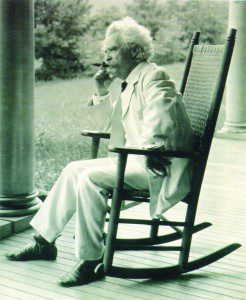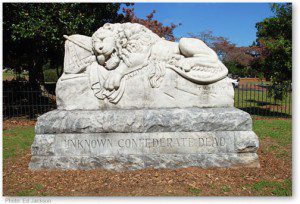 In “Which Was the Dream?”, a story begun the year after his beloved Susy’s sudden death from meningitis, Mark Twain attributes a series of terrifying dreams to a child character called “Bessie”. There is good reason to think that Bessie (“all soap-bubbles and rainbows and fireworks”) was modeled closely on Susy’s childhood self. It is likely that Bessie’s scary dreams – with the recurring theme of being pursued and eaten by bears – were also modeled on Susy’s dreams. Dreams of being attacked by bears often herald illness. Since the bear, in North America, is a medicine animal, being at odds with a bear in dreams is something to investigate very carefully as a possible health advisory.
In “Which Was the Dream?”, a story begun the year after his beloved Susy’s sudden death from meningitis, Mark Twain attributes a series of terrifying dreams to a child character called “Bessie”. There is good reason to think that Bessie (“all soap-bubbles and rainbows and fireworks”) was modeled closely on Susy’s childhood self. It is likely that Bessie’s scary dreams – with the recurring theme of being pursued and eaten by bears – were also modeled on Susy’s dreams. Dreams of being attacked by bears often herald illness. Since the bear, in North America, is a medicine animal, being at odds with a bear in dreams is something to investigate very carefully as a possible health advisory.
In describing Bessie’s dreams, Mark Twain begins in a breezy, nonchalant fashion: “Like most people, Bessie is pestered by recurring dreams.” Then he stuns us by revealing the content: “Her stock item is that she is being eaten by bears. It is the main horror of her life. Last night she had that dream again.”
Then he describes Bessie thinking hard about these horrible dreams, and looking up like one who feels she has not been dealt a fair hand in life, and saying. “But mamma, the trouble is, I am never the bear but always the person eaten.”
Now the author introduces a thrilling and utterly unexpected plot development. The parents are hatching a plan to turn Bessie’s “persecuting dream” into something quite different. In a surprise performance to be mounted that same evening during Bessie’s birthday party, her father’s “high capacities in the way of invention” will be used to turn her dream into “something quite romantically and picturesquely delightful.”
How would this be contrived? By putting Bessie in a bear suit and having her pursue and pretend to eat party goers? By having a crowd of people in bear suits flee before her? Or by having her make friends with the bear, and feed him birthday cake, and dance with him?
We do not know, because the party is never held. A terrible fire that night destroys the house, and the father and his family are thrown into such turmoil and tragedy that their previous good fortune seems like a fading dream. Mark Twain proceeds to explore one of the favorite themes of his later years: the difficulty of distinguishing the dream of physical existence from any other dream.
But in the passage relating to Bessie’s dreams – perhaps looking back over Susy’s tragedy with hindsight – he has taken a long step towards understanding and portraying two vital aspects of dream healing. The first is that dreams alert us to possible problems before the crisis develops. The second is that by reworking dream imagery – if we can do this with sufficient “invention” and authenticity and drama – we can move towards resolution and healing. We can stop being the “person eaten” and claim the healing gifts of the bear.
It seems that, like the characters of his story, Mark Twain was unable to apply this insight fully in the circumstances of his family life. But the fact that he grasped it tells us that he was, in truth, a deep dreamer.
Which Was the Dream? And Other Symbolic Writings of the Later Years. Edited by John S. Tuckey. Berkeley: University of California Press, 1968, 46-7. For a full account of Mark Twain’s life as a dreamer and student of coincidence, see my Secret History of Dreaming.

